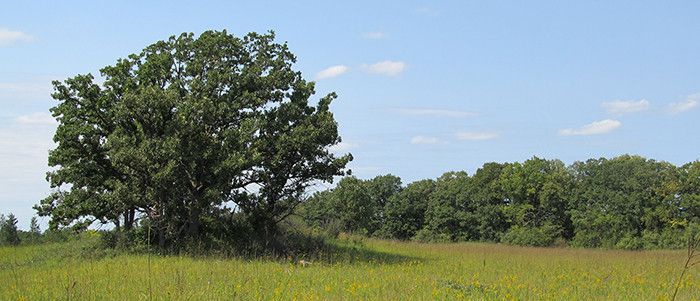Waterloo Wildlife Area
Waterloo Wildlife Area is a property of approximately 4,500 acres with a diverse range of habitat types, including open water marsh, sedge meadow, fens, lowland and upland hardwoods, some native prairie, and extensive shrub carr. The property is scattered across an area about 2 miles east to west and 7 miles north to south, falling within both Jefferson and Dodge counties. Embedded within the wildlife area are two State Natural Areas, Waterloo Prairie and Waterloo Quartzite Outcrops.
The property provides abundant hunting opportunities, particularly for pheasant, deer, turkey, and small game. Good waterfowl hunting can be found at times on the restored wetlands. Wildlife-watching opportunities abound and can be accessed from any of the many parking lots on the property. A wide range of both game and non-game species can be seen, especially those associated with wetland habitats, like various ducks and wading birds, mink, otter, beaver, Blanding's turtles and more.
Management Objectives
Historically, Waterloo Wildlife Area was known as pheasant country. The Wisconsin Conservation Department managed the property for ring-necked pheasant hunting and collected considerable hunter/user data throughout the years of ownership. In the 1970s, Wisconsin DNR research personnel accomplished a large range of important research projects, which featured pheasant nest success, habitat manipulation for pheasants and predator/prey relationships including red fox and various raptors.
Today, management emphasis at Waterloo Wildlife Area is focused on wetland restoration, reestablishment and maintenance of native prairie, and protection and management of remnant native habitats. The Waterloo Prairie SNA consists of two units of low, wet grasslands and feature raised calcareous fens and springs, which still harbor numerous native species of flora, and are a priority for management.
Practices used to improve and manage wetland and upland habitats at Waterloo Wildlife Area include prescribed fire, planting native flora, and removal of brush and invasive species. Farming agreements are also used to prep sites for permanent native prairie plantings and to provide managed sunflower fields for doves.
The Glacial Heritage Area master plan was completed in 2011 and guides the long-term management of this property. Visit the property planning page for more information on master planning for this and other wildlife areas around the state.
Recreation
The Waterloo Wildlife Area offers many recreational opportunities:
- Birding
- Canoeing
- Cross-country skiing (no designated trail)
- Fishing
- Hiking (no designated trail)
- Hunting (noted for: pheasant, deer, turkey, waterfowl, mourning dove and other small game)
- Kayaking
- Snowmobiling (designated trails only)
- Trapping
- Wild edibles/gathering
- Wildlife viewing
Note: Dogs are allowed on a leash from April 15 to July 31.
Amenities
- Bathroom - none.
- Parking lot - currently, there are 17 lots throughout the property.
- Campground and size - none.
- Trails, Types and Lengths - none.
Maps
Download [PDF] a map of this property.
If you are interested in exploring this property further, you can access an interactive map.
Find out more about how to adopt this wildlife area.


